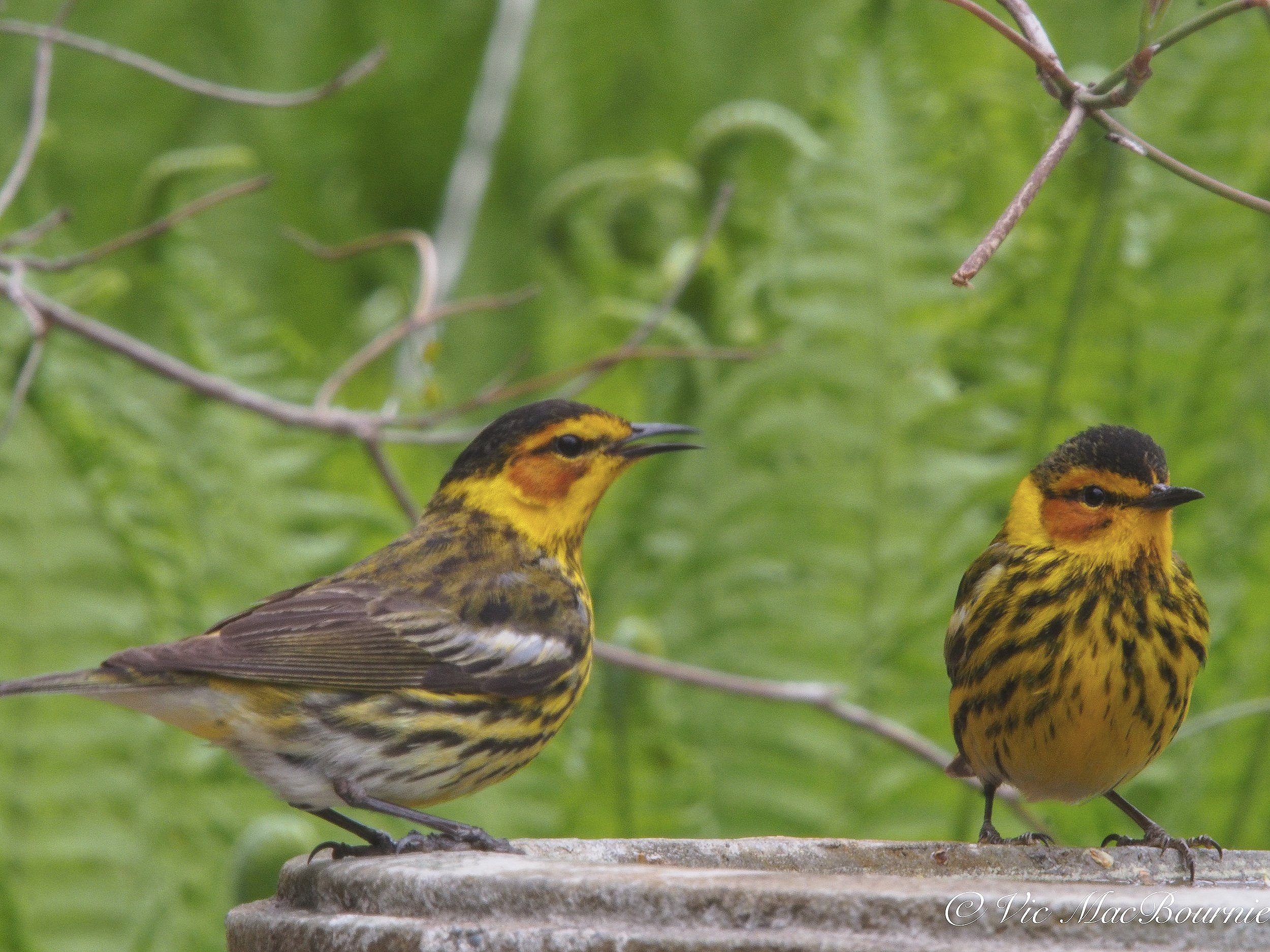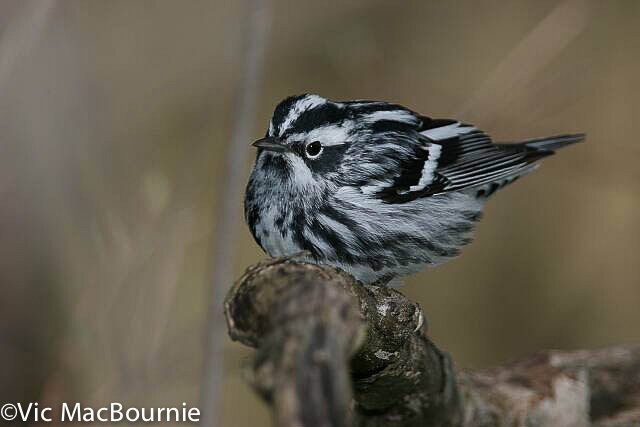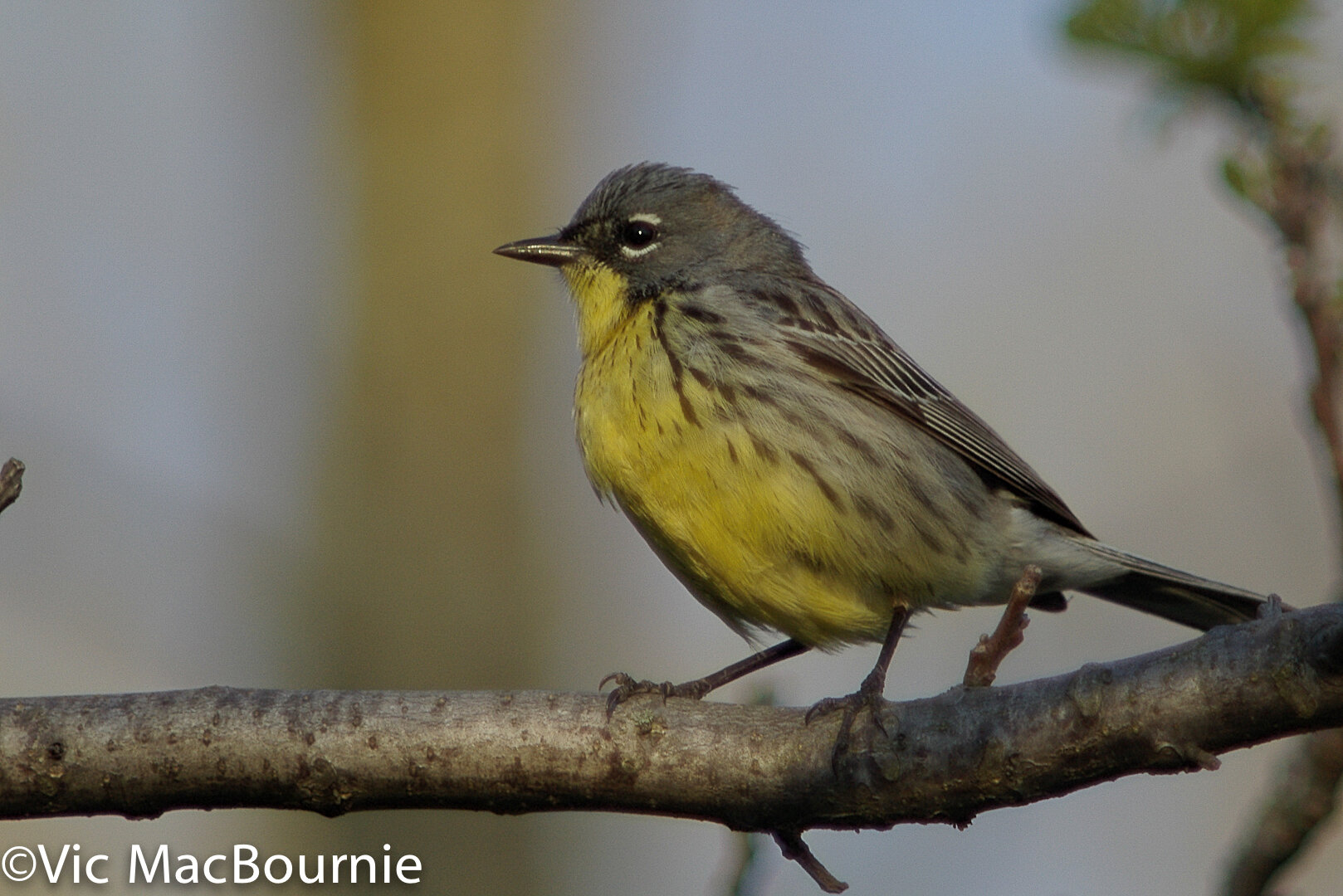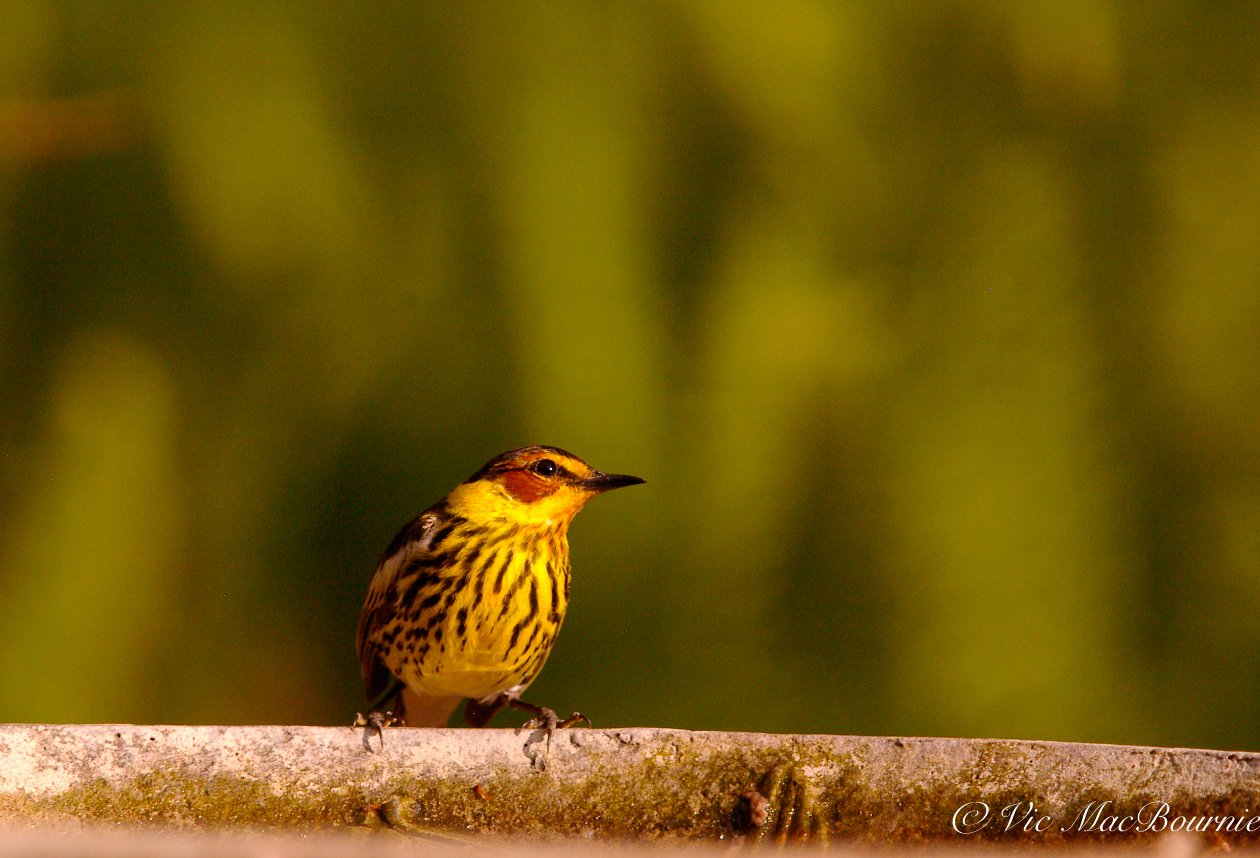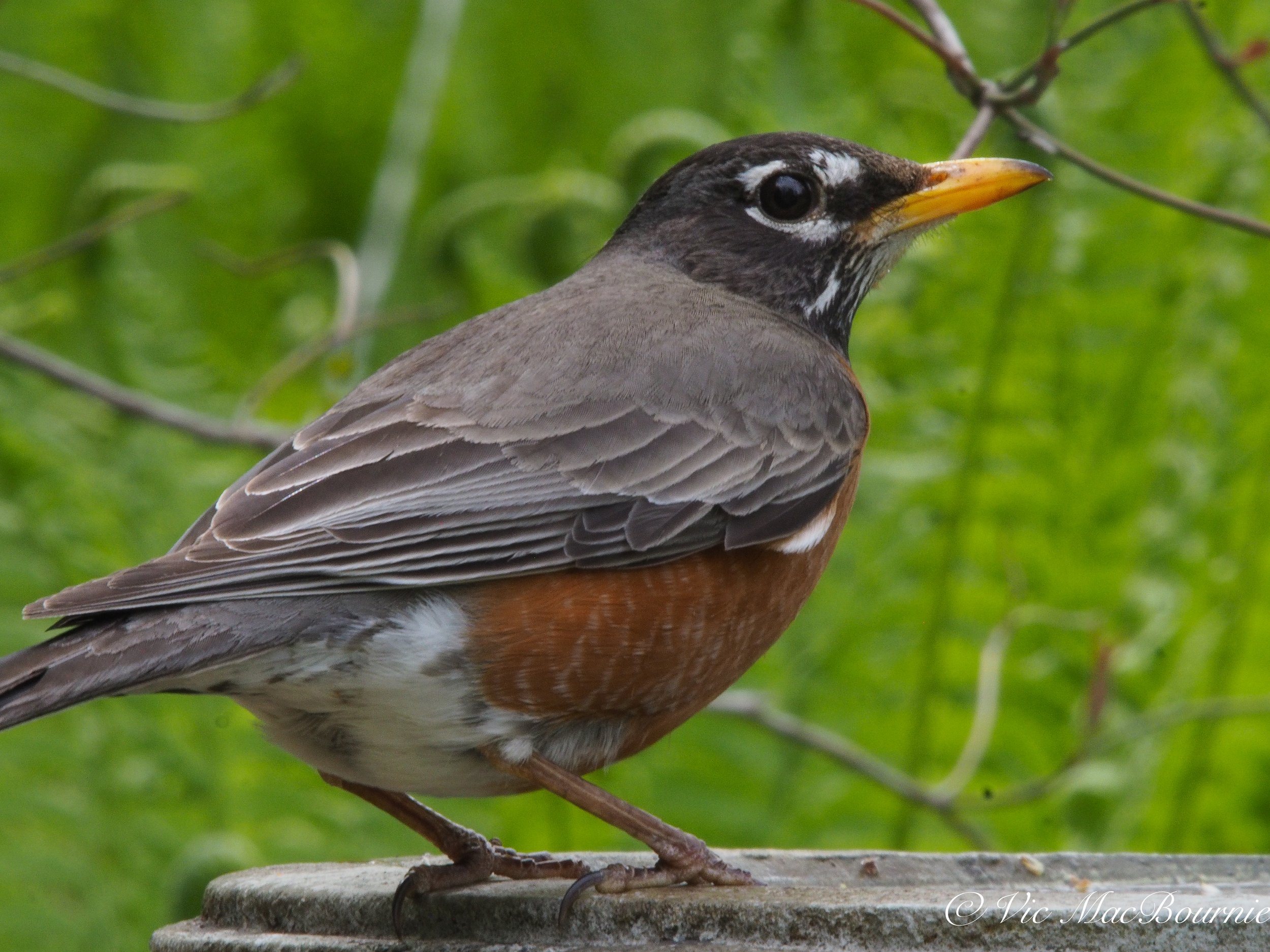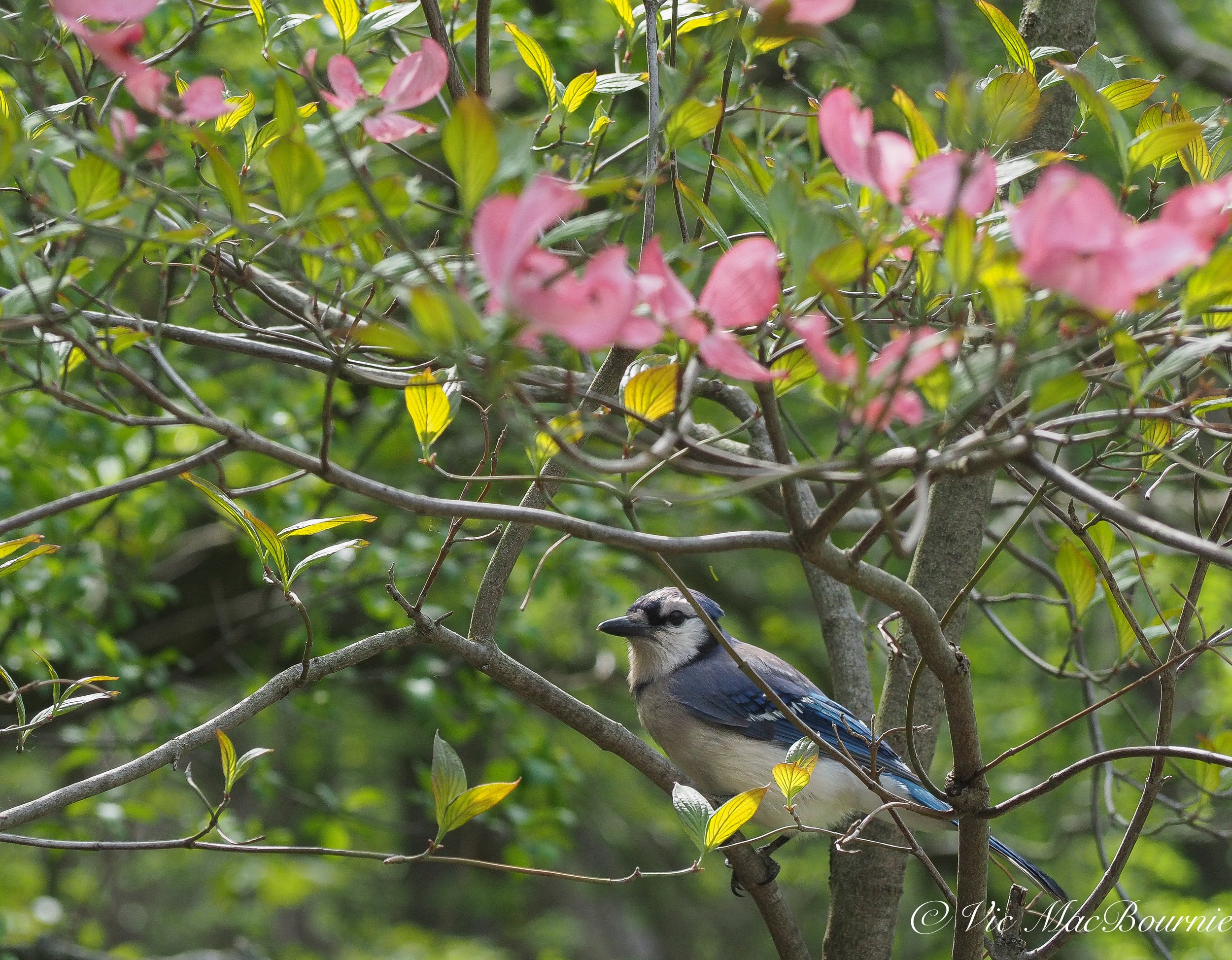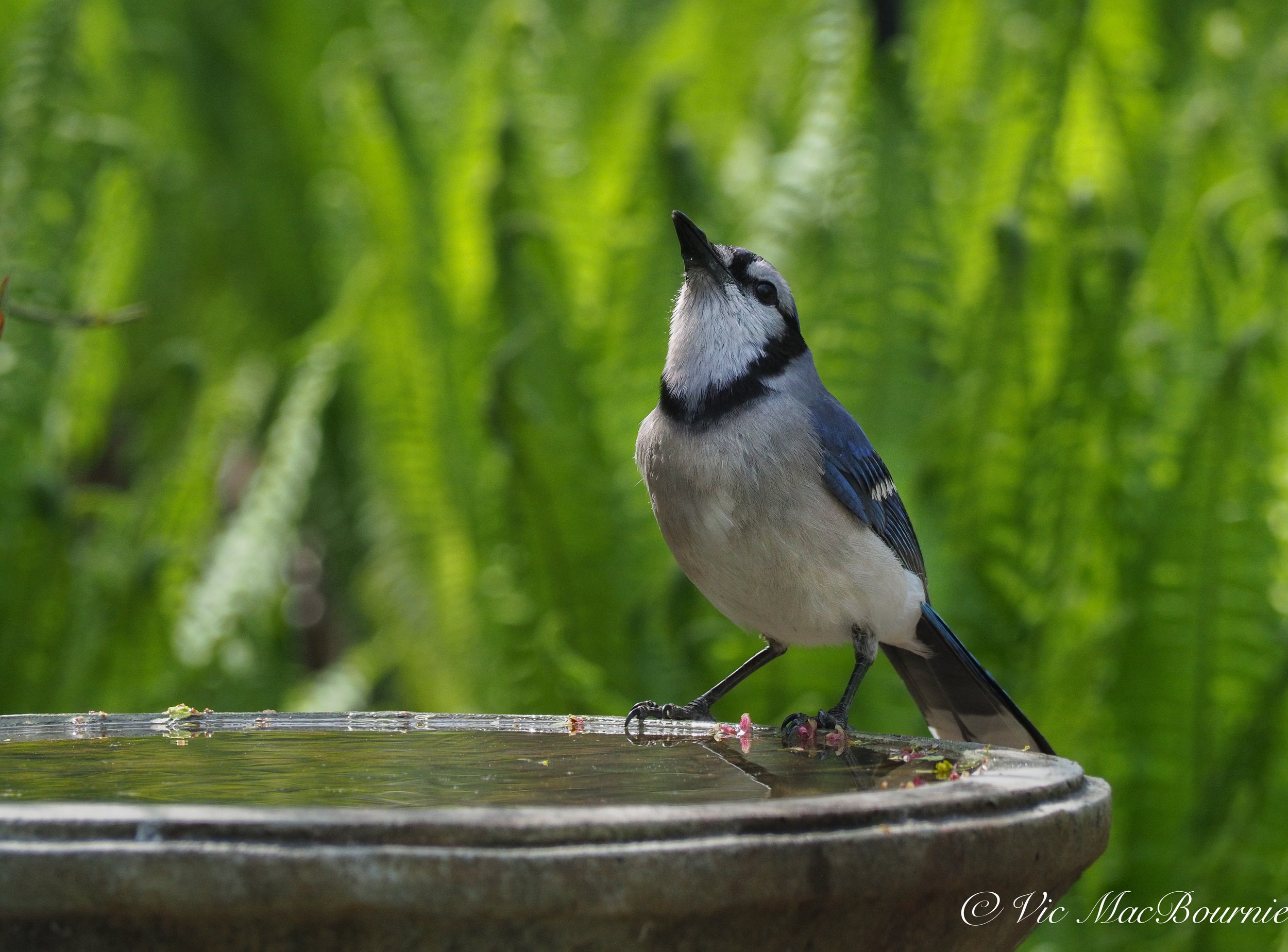A weekend of warblers in the woodland garden
How to attract warblers, even for a weekend
It was an unforgettable Mother’s Day weekend of warblers in our woodland garden.
It started with a quick glimpse of what appeared to be a Blackburnian warbler flitting about in the blooms of our yellow magnolia tree capturing insects, and ended with me sitting in my Tragopan photo blind photographing warblers from a few feet away as they came down for a drink in one of our many bird baths. The bird bath that seemed to attract them most happened to be directly under a flowering dogwood in full bloom.
Some non-birders (my wife included) might say “so what, they’re just birds.”
To that I say: “No, warblers aren’t just any birds. They’re special, and these species don’t normally hang out in gardens. At least not where I live in Southern Ontario.”
We had Blackburnians, Cape May and Yellow-Rumped warblers… and that’s just the ones I saw.
In fact, most birders know full well that the annual pilgrimage to Pt. Pelee’s Festival of Birds, on Canada’s southern most tip, is really one of the only ways to catch a glimpse and hopefully a photograph one or two of some of these more rare warblers that are all filtered to the tiny spit of sandy forest on Lake Erie. Most of the birds are so exhausted from flying over the lake that they take refuge at the Point of land and, in many situations, allow a close approach.
Birders come from around the world just to catch a glimpse of some of these rare warblers and other migratory birds.
So, to have a few drop down into our little woodland during their migration to more northern locations, is an honour I don’t take lightly.
In fact, for a brief second or two, I had two Cape May warblers (see image below) drinking from the bird bath at one time.
How many warbler species worldwide, in North America?
Warblers are one of the most common types of birds, and, hence, they have a wide distribution, covering Africa, Europe, North and South America, Australia, Asia, the Pacific islands, and the subarctic region.
I read recently that Old World (Europe) warblers are in the family called Sylviidae and comprise close to 350 species. In Europe they are related to the thrushes and the flycatchers.
Although warblers look similar and are often mistaken for finches, wrens, or sparrows, they are not related songbirds.
Here, in what is considered the New World (North America), there are 52 species of warbler. In North America, Warblers are members of the wood-warbler family (Parulidae). Worldwide, there are 13 families called warblers.
That’s a lot of warblers worldwide.
But, I would bet that most people (outside of birders) have either never seen a warbler, or would not be able to identify one even if they did.
Warblers are a group of small birds that are also known as perching birds. Their plumage can range from drab colours like gray and brown to bright colours like vibrant red, blue, and yellow.
They might be best know for their trilling and quavering songs, which is actually how they earned their name. Their songs range from rather dull to loud and piercing mating calls in spring.
The name warbler actually comes from an Old French word “werbler,” which means to sing in trills.
How far do warblers migrate?
Identifying their calls might be the easiest way to know they are in the garden.
Their beautiful, almost tropical-sounding songs, are a reminder of how far they’ve migrated to get to our gardens. Many are travelling from Central and south America to far reaches of northern Canada to breed.
Are warblers common in the garden?
One of the reasons more gardeners are not familiar with these birds is because they are not common backyard birds.
The warblers that do visit backyards are elusive and most often spend their time higher up in the tree canopy where they have access to more insects, caterpillars etc.
So, even the more common warblers like the Yellow warbler, often go unnoticed by most casual gardeners who may mistake the flash of yellow for a Goldfinch or even a female oriole.
The Cornell lab or Ornithology is an excellent place to go for help identifying these birds or to get more information.
Can you attract warblers with typical birdfeeders?
Your typical birdfeeder full of sunflower, millet and other goodies is not going to bring warblers into the yard.
You need insects, caterpillars and other creepy crawlies to attract these primarily insect-eating little beauties.
And, for so many gardeners, that’s the problem.
Two Cape May warblers enjoying one of our bird baths. To capture a single Cape May warbler is thrilling enough, but to get two in one frame was a real thrill.
One only needs to go on any of the garden forums on Facebook to read about the insect carnage.
In fact, I am finding it extremely difficult these days to follow garden groups on Facebook when every second question is about how to kill insects and caterpillars in the garden.
Let me scream it from the tree tops: “It’s natural to have insects, caterpillars and other creepy crawlies in your garden. Let Mother Nature take care of them the way she has for thousands of years. This IS birdfood.”
Okay, sorry for the rant.
And, I’m not saying there are not situations where action needs to be taken to deal with a major infestation, but it should be rare rather than a daily occurrence in the garden.
How can we attract warblers?
But, back to weekend warblers in the woodland garden.
I am convinced – or at least I’m going to try to convince myself – that one of the reasons the warblers chose our garden to spend a few days is the availability of insect life, and reliable sources of water in several areas of the garden.
Without these, the warblers would have had no reason to drop down preferring to continue on their way to better locations.
Black and White warblers are less colourful than most but are beautiful in their own simplicity.
To make the weekend of warblers even more special for me, is the fact that we are surrounded by acres of wild forest that I’m sure would have been an excellent source of food for these warblers.
But, by intensifying the availability of insects through a variety of native plants, shrubs and trees, our gardens can become magnets for migrating birds in need of quick hits of energy via insects and caterpillars. Also, I witnessed a number of the warblers rooting around in the fallen leaves for insects.
Some, like Indigo Buntings and Orioles, (links to my posts) might stick around and call our garden home for the summer. If so, they, along with more common backyard birds who depend on an abundance of insects and caterpillars in spring to feed their offspring, will help to keep any outbreak in check while they bring life, colour and their sweet songs to our gardens.
So, if you hope to attract warblers to your garden, even for just a short period during migration, you need to ensure the following:
Reliable sources of fresh water preferably in a variety of birdbaths and natural looking ponds including patio container ponds and on-ground baths. A natural pond with easy access to shallow areas is excellent for all wildlife.
Native plants, shrubs and trees that in turn attract plenty of insects, spiders, caterpillars and other creepy crawlies. Oaks, willows and birch trees are good starters but our warblers seemed to be drawn to our flowering yellow magnolia and dogwoods, which no doubt were attracting insects to the garden.
Leave your fallen leaves. I noticed that the warblers were often on the ground rooting through the fallen leaves from the previous fall, which never really get “cleaned up” in our gardens. Most of the leaves stay where they fall and are just moved off walkways onto the gardens where the spring flowers force their way up through them.
Do not use any insecticides in the garden. Learn to live with the odd outbreak and let Mother Nature do her job to keep the garden in a natural, balanced state.
Interesting facts about warblers
• Warbler migration begins in April from South and Central America making their way down to Canada and the United States. Some, such as the Tennessee warbler and Magnolia warbler, fly farther north to breed in Canada’s boreal forest as well as a few small areas in the United States.
• The more common yellow warbler and yellow throat are seen throughout parts of Canada and the United States.
A beautiful but more common Yellow warbler searches the grasses for insects. Yellow warblers are more common in woodland gardens, especially those that have extensive forests or woodlots nearby and are hosts to native plants, shrubs and trees that attract insects and caterpillars.
• Warblers tend to have thin bills, which enable them to pick up and hold on to insects and caterpillars.
• Because of their colour and active lifestyle, they are often referred to as the butterflies of the bird world.
• Warblers are fast-flyers and can reach impressive speeds of up to 25 mph or (more than 40 kilometers per hour.)
• They can fly long distances: For example the Canada warbler travels more than 3,000 miles during migration
• Warblers songs: Warbler songs are used not only to attract mates, they’re also used to communicate with one another. Warbler mates have even been known to sing duets together.
A more rare Northern Parula warbler photographed at Pt. Pelee National Park. These birds breed in eastern North America from southern Canada to Florida.
• Suet feeders likely play a role in helping these birds survive the worst winters. So, it is a good idea to keep suet out all winter for the birds and to keep an eye out for special visitors. Who knows, you might be lucky enough to be one of the few who can say they saw a warbler in the cold of winter.
• Warblers depend on the boreal forest. In fact, more than half of the warblers breed in the boreal forest which stretches from Alaska into Newfoundland.
• What do warblers eat most? Warblers mainly eat insects, spiders, caterpillars and mosquito larvae.
• Although most warblers are solitary birds, they can be seen at different times of the year in solitary pairs, small groups and in small families.
• Why are they called warblers? Warblers picked up their names from the trills of their songs.
• What is the biggest threat to warblers: Warblers obviously face many threats during migration from hitting high-rise buildings to being caught up in dangerous storms and not being able to find enough food to survive migration. Other threats include parasitism and, of course, the actions of humans through the use of herbicides and pesticides. Climate change also poses risks to these small birds either from sudden extreme weather conditions to changes that affect the availability of sufficient insects at crucial times of the year.
• Warblers build a variety of nests mostly in trees, but also can be found in tall grasses. These nests can range from typical small cup-like structures typical of most nests, to domes in grasses, in bushes, or even hidden inside the ground. Typical construction material ranges from whatever might be available to them including hair (human or animal), long grasses, spider webs, and soft mosses and lichens.
• Warblers generally have an incubation time of about 12 days. The females have an average clutch of 2. The baby birds fledge after about ten days and are independent of their parents after as little as 2-3 weeks.
In conclusion
Normally we don’t attract warblers to our gardens. Instead, they decide to grace us with their presence in our gardens. We can, however, create habitat that is inviting to warblers and hope that they recognize our efforts, even if it’s just for a weekend.
That same habitat will be an invitation, not only to warblers, but to a host of birds, butterflies, mammals and reptiles.
A healthy garden will be attractive to a greater variety of wildlife than we can even imagine. The results are dependent so much on the location and the environment where the garden exists. All we can do is our best to create a welcoming habitat and hope for the best.
Photographing backyard Warblers, Robins and Blue Jays
For those interested in garden and wildlife photography, I thought I would give you a little background. While photographing warblers, I was also able to capture a robin and blue jay so I have included some of those images as well to illustrate the lens and camera capabilities.
My intro to bird photography
I’ll never forget my first introduction to serious bird photography.
It was at Pt. Pelee National Park during the Migratory Bird Festival when birders and bird photographers from around the world gather in great numbers to see and capture images of these tiny birds.
Let’s just say there were days when the photographers and birders outnumbered the birds 20:1. But it was certainly an eye-opening experience.
The bird photographers gear made the photojournalists at sporting events look like they were carrying point-and-shoot cameras and lenses compared to the monster lenses at the national park.
I can safely conclude that, judging from the size and quality of the lenses, many of the beautiful images you see of warblers come at a very hefty price tag.
Serious bird photography can be extremely expensive. Big, fast lenses can cost as much as a small used car. Not to mention the latest cameras, tripods and tripod heads. Add in the cost of overnight stays and travel to birding hot spots and you can imagine how the costs add up.
So, that makes stepping out into your backyard and catching a few shots of warblers almost priceless.
I was lucky enough to capture our weekend warblers with two very old cameras and a couple of vintage lenses: including a 20-year-old, 6 megapixel, Pentax istD and an 8-year-old Olympus OM-D E-M10 (link to my post) together with my favourite wildlife lens the 36-year-old Pentax 300mm F* f4.5 (link to my post) and the kit Olympus 40-150mm zoom lens.
Blue jay photographed with the Olympus EM10 and 40-150mm lens.
The crop factor on the 300mm with the Pentax istD gives me the approximate equivalent of a 420mm lens. I also used a converter on the Olympus that allowed me to attach the 300mm lens to the Olympus with a crop factor of two creating the equivalent of a 600mm lens.
The converter does not transmit any information to the camera and turns the lens from autofocus to manual focus. The Olympus, like many micro4/3 cameras have features that make using manual focus lenses much easier to use.
All this being said, capturing images of these tiny birds would not have been easy without my secret weapon.
The secret weapon for me is the Tragopan photographic blind that allowed me to get in very close to the birds. Once I recognized that the birds were regularly frequenting one of our bird baths, it was a simple matter to set up the blind near the birdbath and wait them out.
My goal was to capture an image of a warbler in the flowering dogwood. Unfortunately, I was unable to capture that shot, but I did manage to get them on the bird bath. During the process, I was able to capture a blue jay in the dogwood tree and on the birdbath. (see above).




